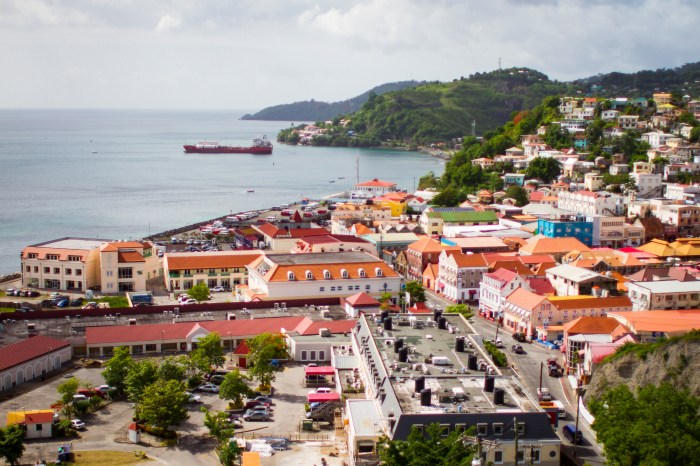Tropical Storm Harvey is beginning to bring rain to the Windward Islands, and may pose a threat early next week in parts of Central America’s Caribbean coast, according to reports.
Tropical storm warnings have been issued for parts of the Windward Islands, including Martinique, St. Lucia, Barbados and St. Vincent and the Grenadines, reported the Weather Channel early Friday.
It said warnings are issued when tropical storm conditions are expected within 36 hours.
A tropical storm watch is in effect for Dominica, where those conditions are possible within that timeframe, the Weather Channel said.
It said tropical storm conditions, with winds of 39 mph or greater, are expected to first reach the Lesser Antilles within the warning area early Friday, making outside preparations difficult or dangerous. Tropical storm conditions are possible in the watch area on Friday.
Thunderstorm activity over the storm has not changed much since a Thursday afternoon hurricane hunter flight found winds of 40 mph, the Weather Channel said.
It said another mission is scheduled into Harvey on Friday morning to see if anything has changed in the storm.
Harvey will bring two to four inches of rain across the Windward Islands from Martinique southward to Grenada, which could trigger life-threatening flash flooding and mudslides in mountainous terrain, the Weather Channel said.
After that, it said the system will then track westward through the rest of the Caribbean Sea, and will likely pose a threat to parts of Central America and/or Mexico’s Yucatan Peninsula early next week.
“It’s not clear how strong this tropical storm will become through its Caribbean trek, due to potential interaction with dry conditions and sinking air,” the Weather Channel said. “Interests throughout the Caribbean should monitor the progress of Harvey through early next week.”
The Weather Channel said there are two Other disturbances to monitor. It said Invest 92L continues to fester a few hundred miles to the east of Harvey.
This invest, which has shown signs of strengthening through late day Thursday could become a tropical depression on Friday or over the weekend, the Weather Channel said.
It said a fresh surge of such dry air, known as the Saharan Air Layer (SAL), is pushing toward 92L right now.
“This dry air may mix in with the disturbance, preventing thunderstorms from persisting and clustering,” the Weather Channel said.
Furthermore, if 92L tracks farther north, as expected, wind shear – the change in wind direction with height – is stronger to the north of the Leeward Islands, according to an analysis from the University of Wisconsin.
“This hostile wind shear that typically rips apart tropical disturbances and weaker tropical cyclones may inhibit 92L from developing significantly, if it gains enough latitude north of the Leeward Islands this weekend,” the Weather Channel said.
It said a hurricane hunter mission has been tentatively scheduled for Saturday afternoon to determine if Invest 92L has organized and strengthened enough to be classified as a tropical depression or tropical storm.
The Weather Channel said even if 92L doesn’t develop into a tropical cyclone the next few days, this disturbance will likely continue migrating through the Bahamas, then into the Gulf of Mexico next week and will be monitored for any potential later development.
Meantime, the Weather Channel said a tropical wave emerged off the west African coast Wednesday, well east of Harvey and 92L, kicking off its journey across the eastern Atlantic Ocean.
This latest wave may develop by the weekend but will not be near the longitude of the Lesser Antilles until early next week, the Weather Channel said.
“What form that system takes – tropical wave, depression, storm or hurricane – and where it exactly tracks remain unknown at this time, though the majority of forecast guidance suggests this system will track north of the Leeward Islands,” it said.
“We are in the climatological peak of the hurricane season, so each tropical wave or area of low pressure in the Atlantic Basin must be watched closely for development,” it added, stating, however, that not all tropical waves or low-pressure systems that emerge from Africa become tropical depressions or tropical storms, “but they are all monitored closely, particularly when atmospheric conditions are ripe for them to spin up.”
























